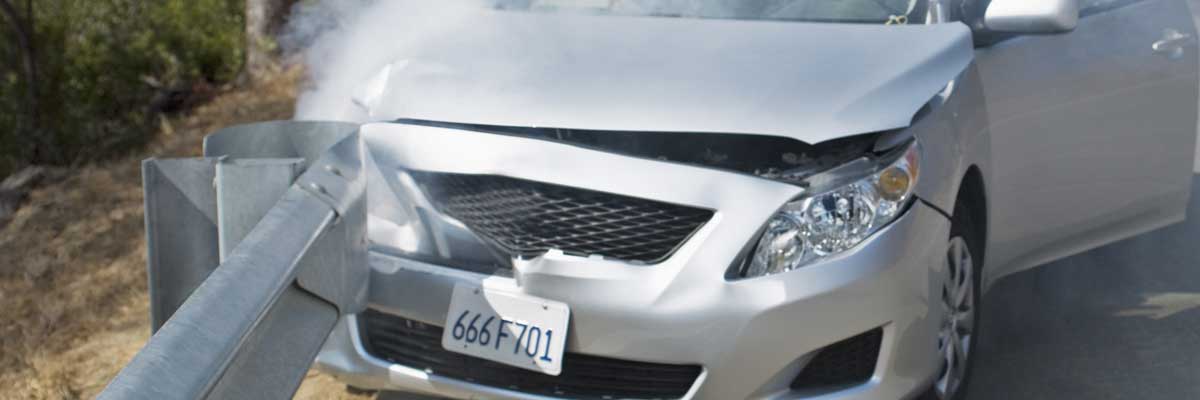
In car accidents both severe and less so, the vehicle(s) involved may be deemed damaged beyond repair. This is when your insurance agent calls with the unfortunate news that your vehicle has been declared a total loss. But, what happens between the accident and that phone call to determine whether a vehicle’s next stop is the repair shop or the junk yard?
Let’s take a look at three primary questions insurance carriers consider before declaring a total loss:
- What’s the vehicle’s actual cash value (ACV) vs. the cost of repairs?
Every vehicle has an ACV, and insurers compare it to the cost of needed repairs when handling a car insurance claim. To arrive at your vehicle’s ACV, insurers use such information as the condition of your vehicle and its mileage, as well as consult sources such as the National Automobile Dealer Association (NADA) and even Kelly Blue Book. If the resulting ACV is lower than (or a certain percentage of) the cost of repairs, as estimated by a reputable repair shop, you’re likely looking at a total loss.
For vehicles that were well past their prime before sustaining extensive damage in an accident, a total loss is oftentimes inevitable – sometimes even with seemingly minor damage. But, new cars don’t get a free pass. If the damage is severe enough, even the newest of cars may be totaled.
- Can the vehicle be repaired to safety standards?
Cost isn’t the only factor in the total loss equation. Repairing a vehicle after an accident means making it safe for the road again. If it’s just not possible or not cost-effective to do so, a total loss may result.
- What do state laws say?
Insurers don’t arbitrarily make decisions when it comes to a total loss. In addition to evaluating the above factors, they must also adhere to state laws.
My Car Is a Total Loss - Now What?
Now we're back to that phone call from your agent. Your car has been declared a total loss, and your agent walks you through what will happen next, including:
- Paying Your Deductible: Did someone else cause the accident? If so, his/her insurance carrier should handle the total loss settlement. That likely means no deductible for you. However, if the carrier doesn’t step up or you’re at fault, your Collision Coverage, if you have it, will come to your aid during a covered loss. And, you’ll need to pay that deductible.
If you only carry Liability Coverage, then you don’t have any coverage for damage to the actual vehicle itself. Thus you can’t expect any total loss payout from your carrier.
- Transferring Ownership: You’ll essentially sign over ownership of your totaled vehicle to the insurance carrier settling the claim – in exchange for any settlement to which you’re entitled, of course. From there, the insurer sees to its proper disposal. You’ll want to maintain your insurance coverage on the vehicle until it’s officially taken off your hands.
In some cases, clients want to keep their totaled vehicles, which opens up a whole other can of worms. First of all, some states won’t even allow it. Secondly, it’s extremely inadvisable to try to put a totaled vehicle back on the road. Despite how extensive the repair work is, the car’s title will reflect that it’s been totaled, preventing you and future owners of the vehicle from getting insurance for it.
- Getting Paid: Here, the vehicle’s ACV comes back into play. This is the amount, minus any deductible and fees, the insurer will pay to cover the total loss settlement. If you own the vehicle, you get the check. If you lease or finance it, the leasing or financing company likely gets the check. Note the settlement may be for more or less than what you owe. If any money remains after paying off your lease or loan, it’s yours. If not, you may be on the hook for the difference.
Recently, when a client experienced a total loss accident, her carrier set her vehicle’s ACV at $8,600. She had a $500 deductible, bringing the total payout to $8,100, of which $1,300 went to pay off her loan balance and the remaining $6,800 went to her to help with purchasing a new vehicle.
If her loan balance had been $10,000, however, she would have owed $1,900 and not have any of the settlement left over to go toward those new wheels. To help with these scenarios, most carriers offer an optional auto insurance coverage oftentimes known as Loan and Lease Coverage or gap coverage. It helps cover the difference between what you owe on your loan or lease and your vehicle’s ACV when facing a total loss. But, it needs to be on your policy before a total loss occurs.
- Renting a Car: Clearly, following a total loss, you no longer have a car to drive. This is where you’ll thank yourself for adding rental car coverage to your auto policy. It will help with the costs of renting a car for the period of time outlined in your policy. If you’d like to enjoy the rental car for longer than your policy allows, you’ll be responsible for covering the cost.
- Buying New Wheels: Once you’ve found your new wheels and are ready to put the car accident behind you, be sure you have the insurance coverage, including options such as Roadside Assistance, you want for it before driving off the lot.
As you can see, a lot goes into declaring a car a total loss. But, the whole process doesn’t have to cost you a lot. If you have the coverage you want to help guard against accident losses, getting back on the road in a new set of wheels will be a relatively smooth process. If not, you can bet that headache after headache will ensue.
See the original article here: https://www.safeco.com/blog/total-loss-car-insurance-claim
Posted Wednesday, March 22 2017 10:53 AM
Tags : Auto Insurance
|